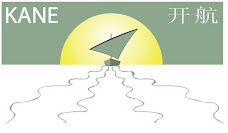I had the absolute pleasure earlier this week of listening to four China hands talk politics, law, economy, and much more at a meeting at New York's Asia Society on Park Avenue in New York. Moderating this four-person discussion was Howard Chao, Partner and Head of Asia Practice for O'Melveny & Myers LLP. He was joined by Nicholas Lardy, Senior Fellow, Peterson Institute for International Economics, Jonathan Woetzel, Director, McKinsey & Company, and Jimmy Hexter, Director, McKinsey & Company. Woetzel and Hexter's new book, "Operation China: From Strategy to Execution" was available after the talk for attendees. Here are some highlights from the talk:
Dr. Lardy began the talk with an overview of China's macro-economic barometers. One of th things I found most astonishing was that China's current account surplus is between 10 & 11% of GDP. By comparison, he noted, Japan's greatest account surplus in the 1980s was 4% of its GDP. That means that China seriously has a lot more cash stored up than even Japan did.
He went on to say that the jump in China's prices is not restricted to just food prices and the overall CPI, but rather the PPI, a barometer of price movements in machinery, is also up and accelerating more aggressively than the CPI.
Next, he talked about why there was so much craze for investments in stocks and real estate by showing us the following:
CPI: up 7%
Savings % offered by banks: 0.71%
So, your real savings rate is greater than negative 6%. Apparently, this is a textbook case of how you create a bubble in other asset classes. Of course, when you have 300 million people urbanizing, you are going to need huge amounts of capital investment in capital-intensive projects.
Next, Dr. Woetzel noted some interesting trends as well going forward...
Migration: From 1990 to 2007, apparently 250million urbanized, but mostly through establishing new cities and shifting boundaries. That's not going to happen because of land restrictions in the future. Effectively since that time, there have been only 100mm migrants to the major cities. Looking forward, there will probably be another 250mm migrants headed for the cities and a total urban population of 1 billion urban.
That is going to drive macro costs of health, education, and food way up. And the greatest burden will likely be on 3rd and 4th tier cities.
Jimmy Hexter then weighed in on China business strategy by explaining that the winners in China historically were those that executed bold strokes of strategy - whether through gaining advantageous licenses, exclusivity, or other sundry tools. However, as we look forward, the winners will most likely be those that deliver excellence of execution. Specifically, companies that can migrate world's best strategies and get their domestic operations to perform better at sourcing, procurement, manufacturing, sales, distribution, and development will win.
By his account, there is an enormous opportunity to improve performance in China, with increasing outputs by 30-50% via this shifting global best practices to result.
60%+ of exports are machinery and electronics
As far as the effect any rising world raw material prices will have on causing countries to shift to Vietnam and other Asian export economies, not likely to happen any time soon. Dr. Lardy cautioned us to remember that Veitnam's total exports amounted to $40billion in 2007, whereas
China's topped $1 trillion.
There was also a discussion of the transient talent pool in China. Here's why they move from one job to another:
1) Influence - want opp to drive performance
2) Promotion
3) More money
What they really want boils down to greater inclusion and recognition. Until they get it, we're likely to continue to see rates as high as 40% job turnover every year in China (in the US by comparison, it's 20%)
The final major topic that was discussed was capital flows in China. What we are seeing is huge amounts of capital being raised around the world, and a good portion of it is flowing to Asia and in particular, China and India. China has become a gigantic player in trade and finance, yet locally, allocation of capital has been poor because, as a result of the negative savings rate mentioned above, a large swathe of unsophisticated investors operating under duress are forced to enter a capital market that they do not really understand.
There was a great comment made about private equity investments in China. Apparently, right now, the players there that are doing well are small China private equity companies that are doing well investing in small companies with niche regional markets. For large caps, it is difficult right now because of high valuations, struggles for control, and disagreements over management.
This was a great talk put on by the Asia Society and we will continue to update you as more relevant talks occur.
Thursday, March 6, 2008
March 4th Asia Society Talk Notes
Labels:
Asia Society,
China,
CPI,
economy,
Lardy,
McKinsey,
migration,
urbanization
Subscribe to:
Post Comments (Atom)


No comments:
Post a Comment